Five graphics show UN climate report in brutal detail
Only massive, rapid emissions cuts across society by 2030 will keep the planet close to 1.5C

The world’s leading climate science panel delivered a stark warning to humanity on Monday that precious little time remains to prevent a runaway disaster.
The so-called “synthesis report” was published by the United Nations’ Intergovernmental Panel on Climate Change (IPCC), a body made up of hundreds of international scientists. The new report boils down six previous IPCC reports, published since 2018, which pulled together and analyzed thousands of scientific papers on how global heating is impacting Earth systems and people.
The report is clear that only transformational action across society to cut planet-heating emissions by 2030 will keep the average global temperature close to 1.5 degrees Celsius (2.7F). (The world has warmed 1.1C (2F) since industrialized countries began burning oil, gas and coal 200 years ago.)
Beyond 1.5C – a limit that all countries agreed to under the 2015 Paris Agreement – the threats increase at pace. But every incremental amount of warming that is avoided will matter immensely, particularly to the most vulnerable.
The IPCC findings were delivered in the starkest of terms over 36 pages today, accompanied by graphics which lay out the scale of the crisis in the most brutal terms. A small selection are explained below.
How each generation will experience climate crisis - depending on decisions made this decade
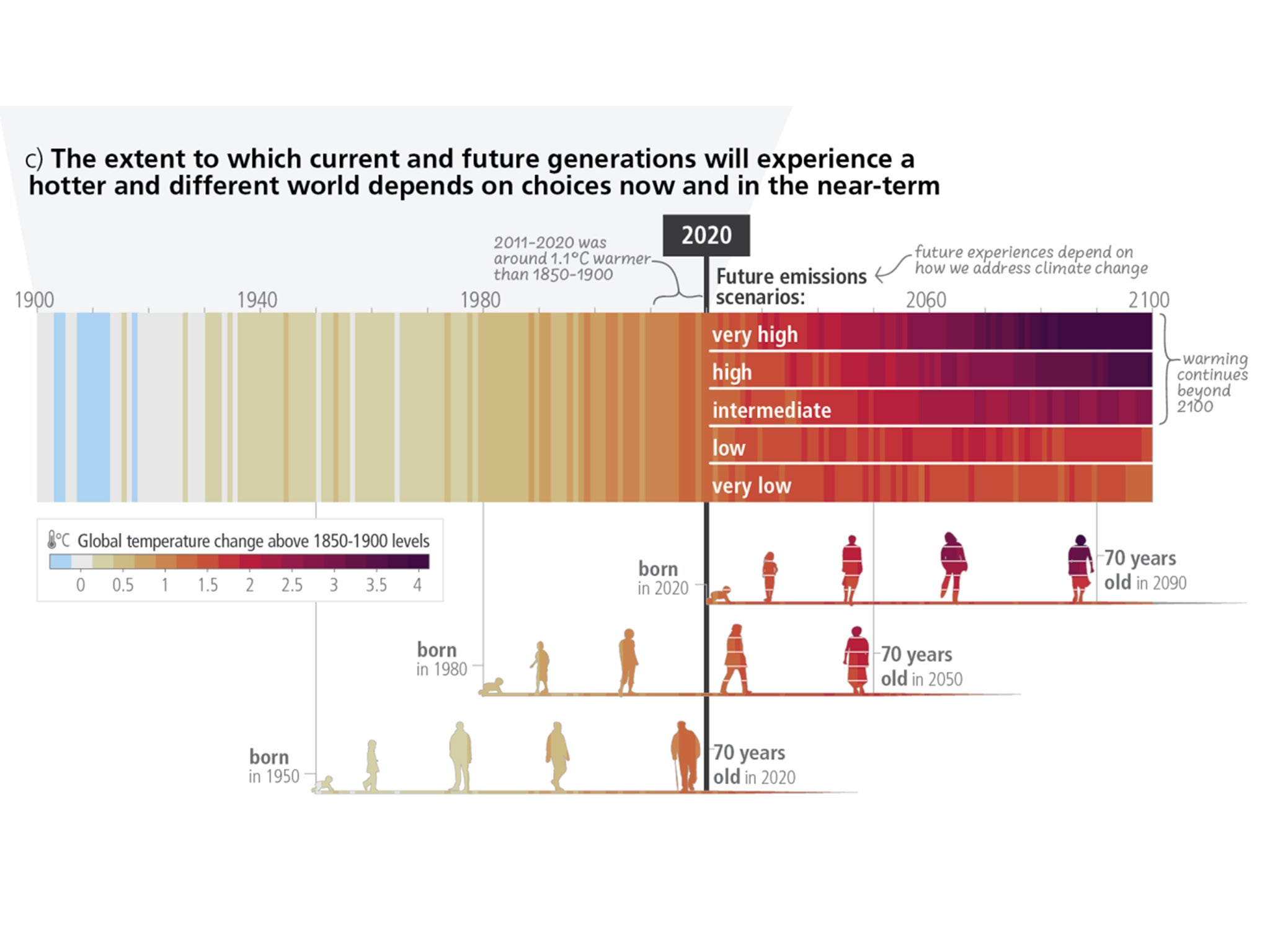
The climate crisis has already wrought devastating impacts on human populations and the natural world, with scientists warning that some impacts are now “baked in” to the future.
But crucially, the decisions that humanity takes over the next few years – from individuals to cities, countries, and at the international level – will play out for decades to come.
This illustration shows projected changes in global surface temperature (compared to the 1850 -1900 level, before rampant use of fossil fuels). It tracks along the lifespan of three generations (born in 1950, 1980 and 2020).
It illustrates global temperature rise depending on if the world tracks along a low, medium, or high emissions scenario. Changes in annual global surface temperatures are presented as “climate stripes”.
Current plans and policies head for danger zone
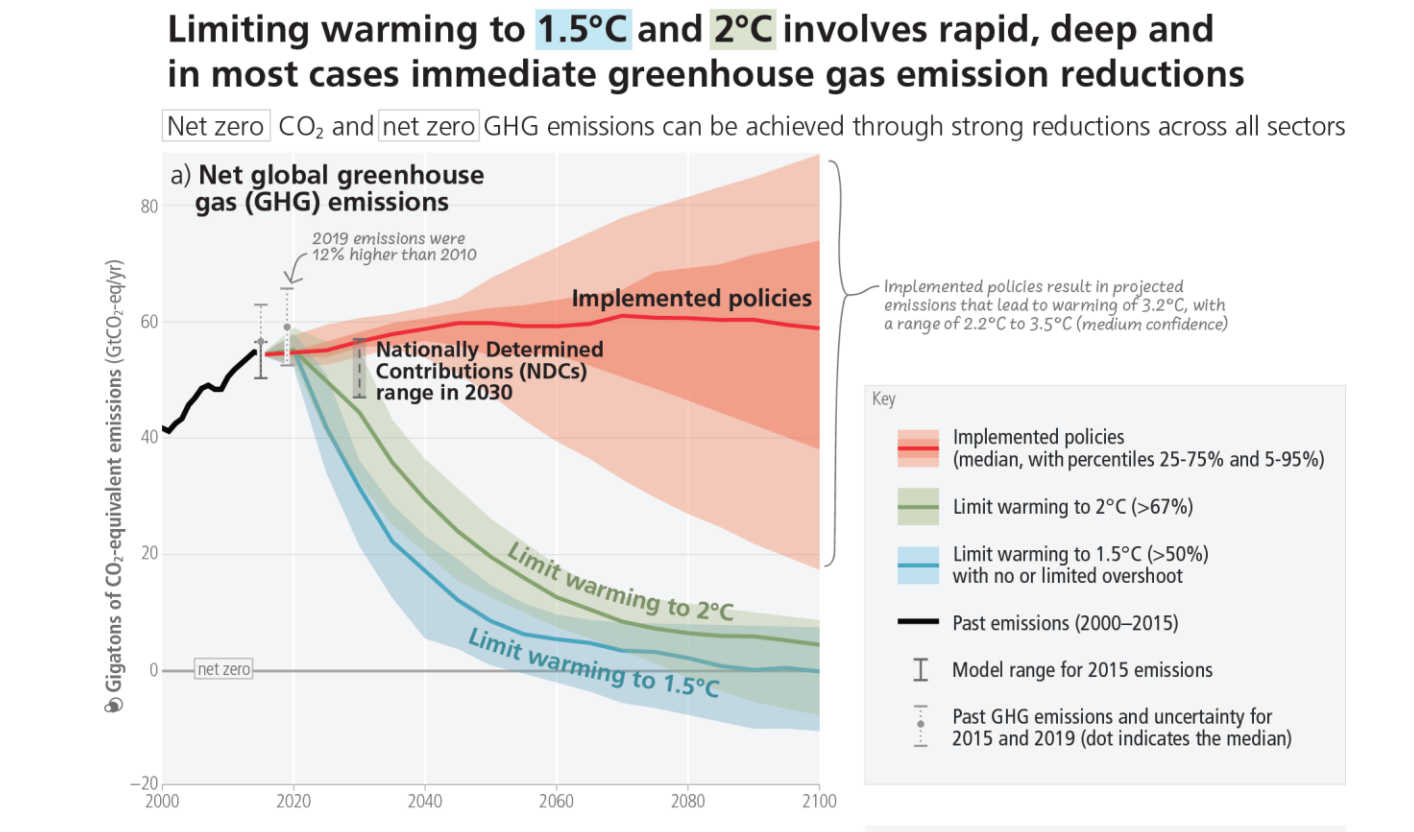
To limit global heating to a somewhat safe 1.5C, or even below 2C, will require deep, ambitious, and in most cases, immediate emissions cuts.
This graphic shows emissions pathways consistent with current policies and plans in red.
Ranges of modelled pathways that limit warming to 1.5C with no or limited overshoot are shown in light blue, and pathways that limit warming to 2C are shown in green.
What the human-caused climate crisis is doing to the planet
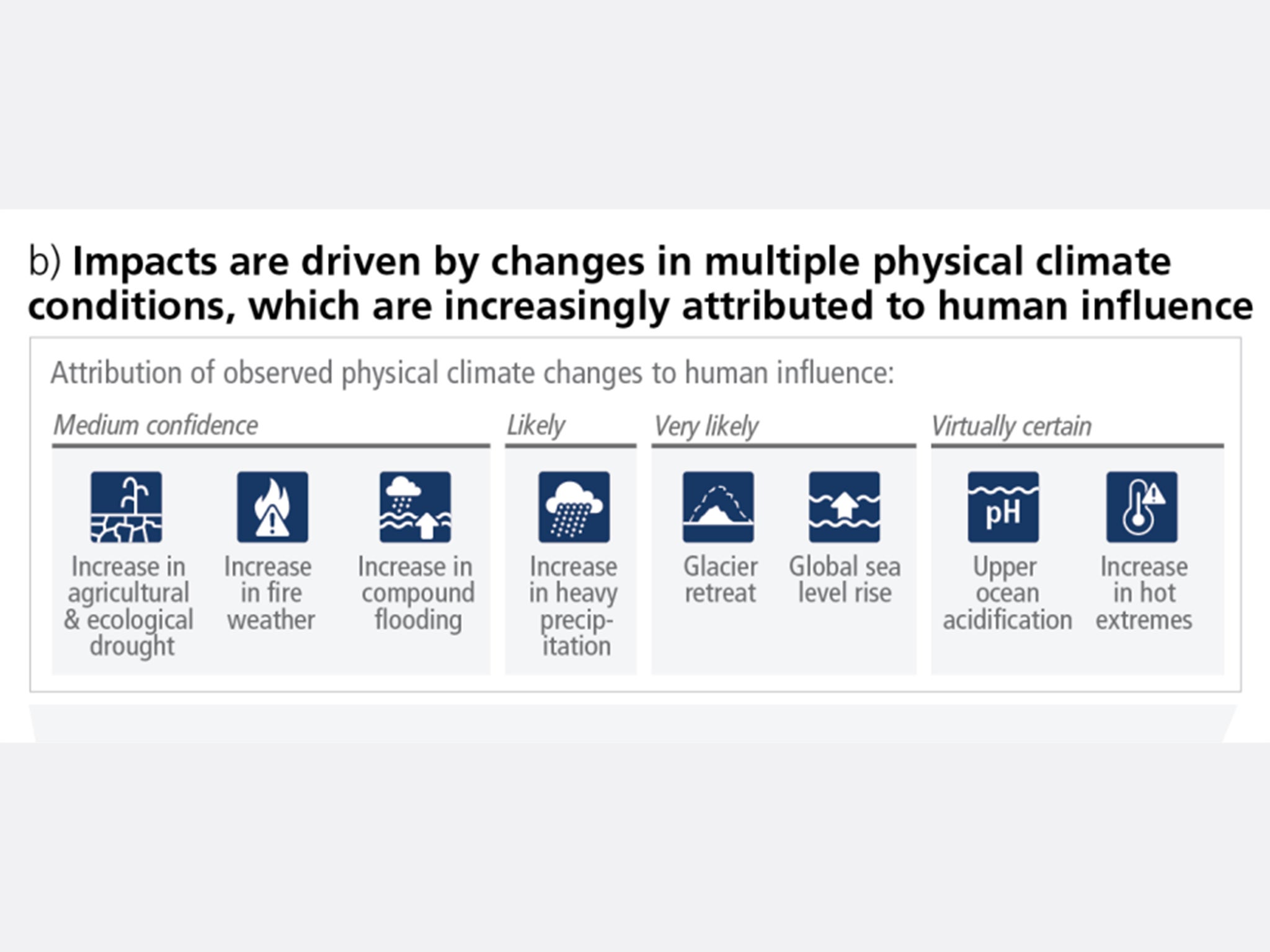
Among the IPCC’s key findings are that:
- Humans are responsible for virtually all global heating over the last 200 years
- The rate of temperature rise in the last 50 years is the highest in 2,000 years
- The amount of carbon dioxide in the atmosphere is at the highest level in at least 2 million years.
But how is the affecting the planet? The IPCC looked at changes to Earth systems such as polar regions, the ocean and extreme weather in detail over the past five years.
Above, the chart shows their level of understanding (from medium to virtually certain) on how the climate crisis is changing our world.
What is the prognosis for humanity?
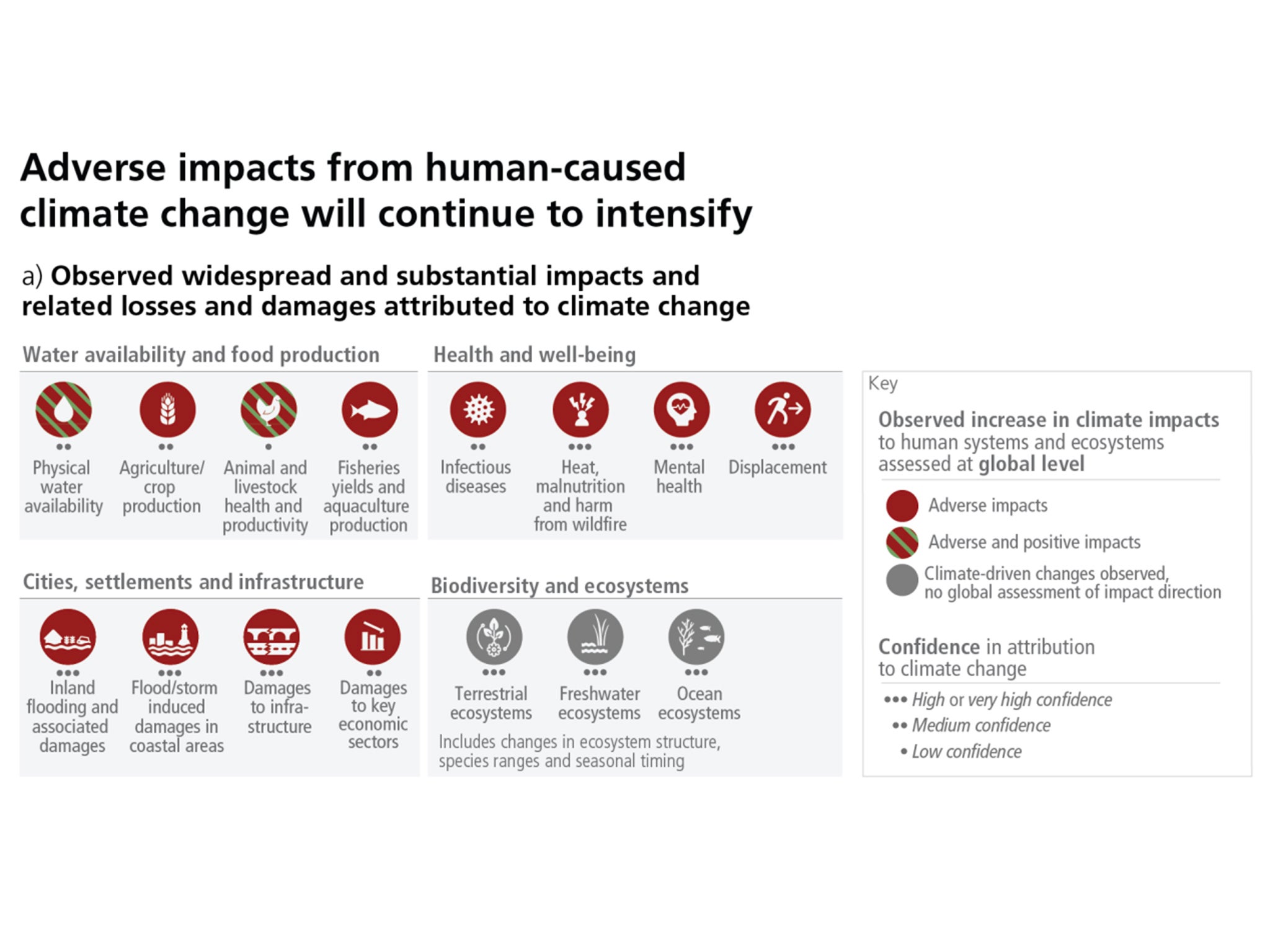
The climate crisis is already making life more difficult globally, and in the most-affected regions, increasingly deadly.
While holding to 1.5C is expected to secure some level of liveability around the world, it will vary dramatically from region to region.
Low-lying Pacific nations, sub-Saharan Africa and the Indian subcontinent are already experiencing catastrophic impacts.
The IPCC analyzed the widespread impacts and related losses and damages on human systems and how land, freshwater and ocean ecosystems are changing around the world.
What happens to the animal kingdom?
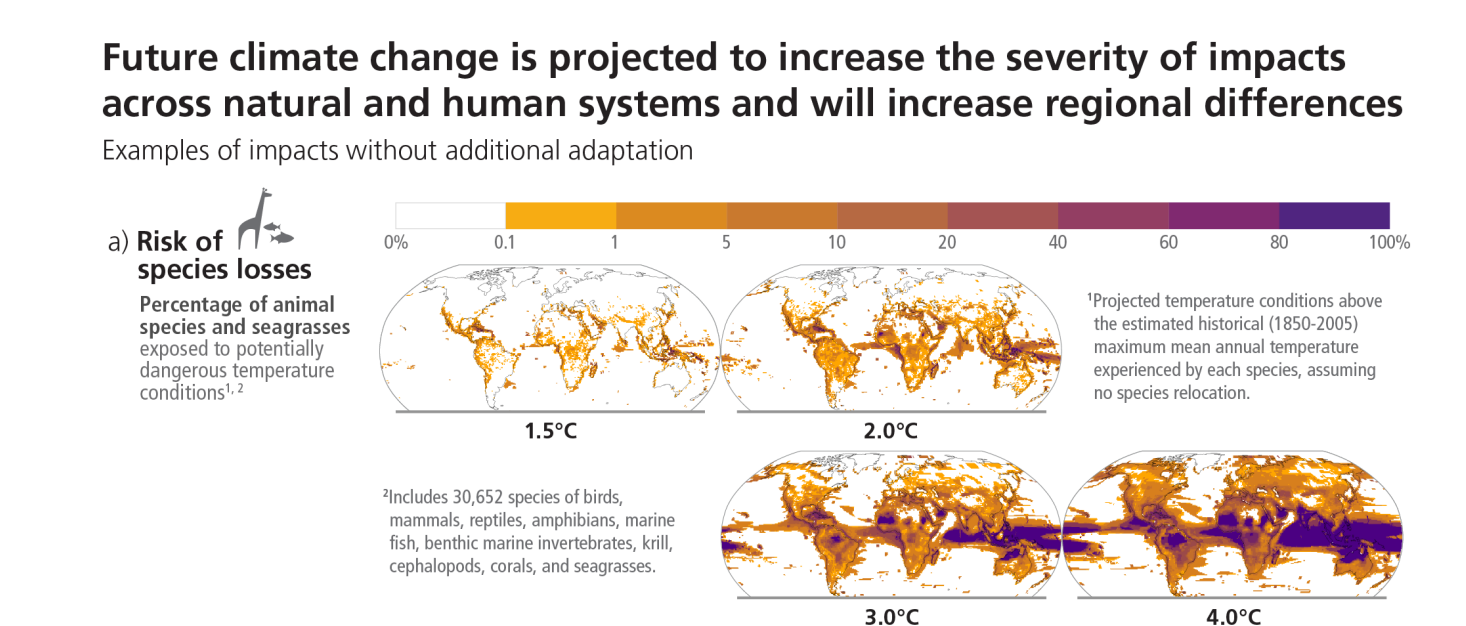
Alongside the effects on people, the climate crisis is taking an extreme toll on the natural world. Hundreds of species have been lost at the local level, the IPCC reports, with mass mortality events recorded on land and in the ocean.
In this graphic, the projected risks and impacts of climate change on species are shown at different global warming levels (relative to 1850 -1900 levels).
Risks of species losses are indicated by the percentage of species exposed to potentially dangerous temperatures (with yellow the least severe, increasing to dark purple).
These projections are based on 21 models of the Earth system, and do not consider extreme events impacting ecosystems such as the Arctic, the IPCC authors noted.




Join our commenting forum
Join thought-provoking conversations, follow other Independent readers and see their replies
1Comments